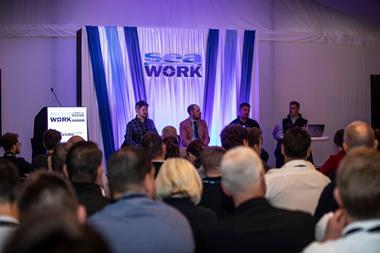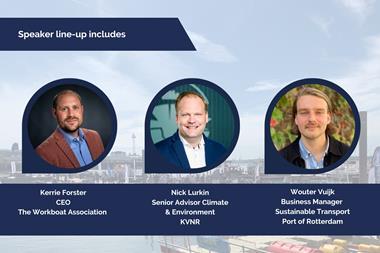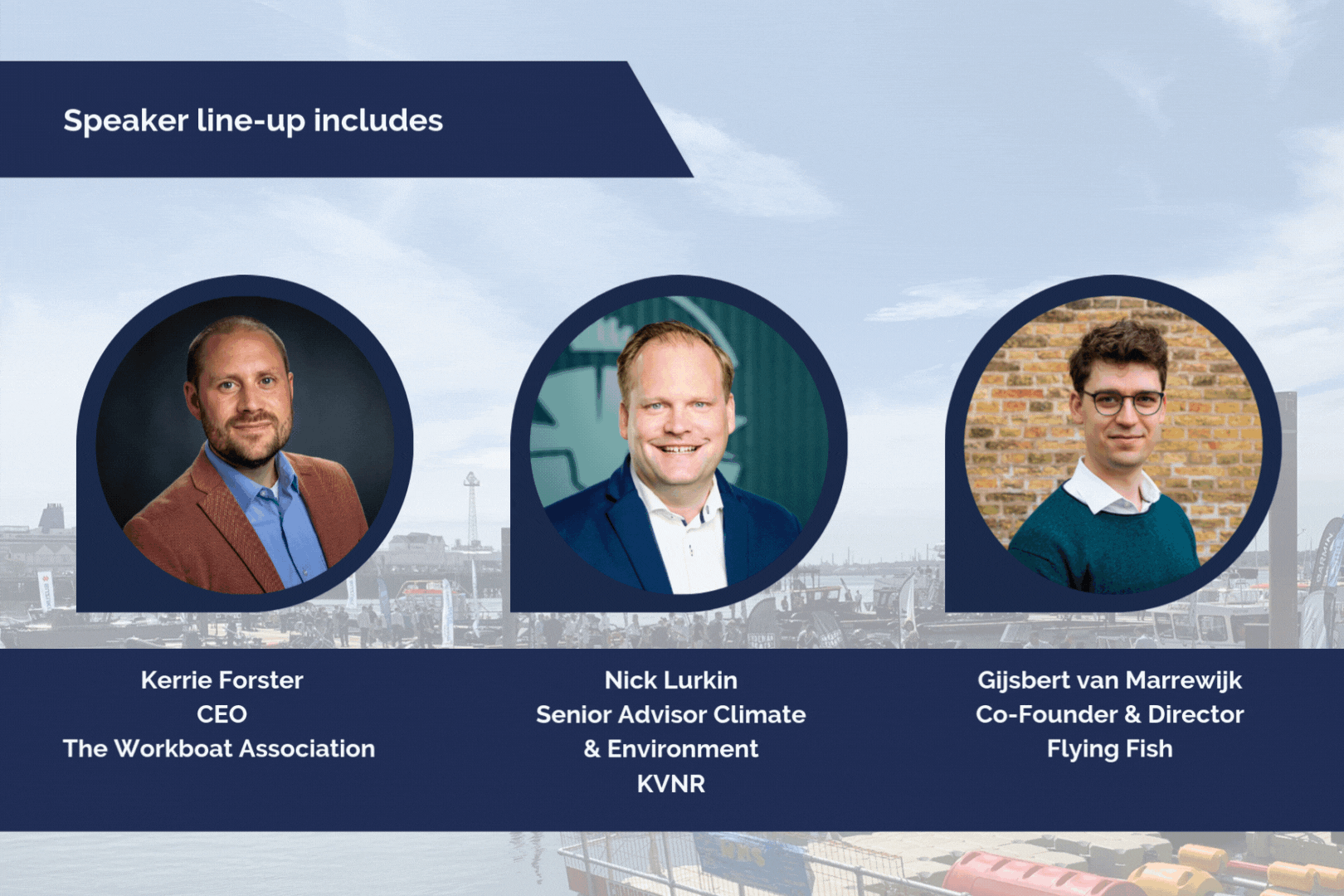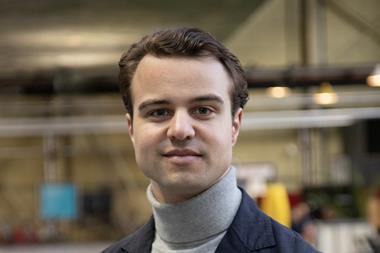Decarbonising the workboat industry must also run in parallel with vital security resilience, the first Seawork conference to be held outside the UK discussed this week.
The ‘chicken-and-egg’ situation that many feel the future fuels scenario has become was also a thread that ran through the sessions, which were predominantly about decarbonising the sector.
In a keynote speech, Brigadier General Rob de Wit, Head of Security with the Royal Netherlands Marine Corps (RNLMC), called on all users of the North Sea to contribute in a drive to improve resilience against what he sees as a growing geopolitical threat.
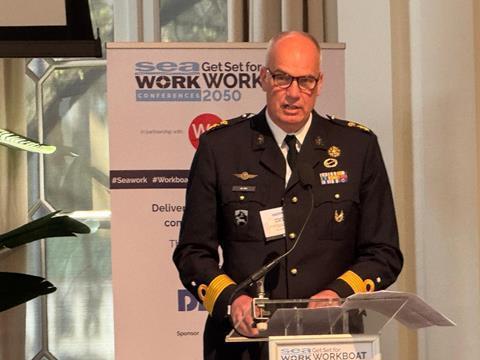
“The world has changed dramatically but are we resilient and if not, how do we prepare for it?” he asked. “We need to start to prepare ourselves – we have weathered many crises but we need to organise ourselves in the North Sea.”
He said a North Sea Maritime Security Centre had been set up to collect and analyse data on what is going on in the North Sea.
“The challenges are enormous, but all of the users of the North Sea should contribute,” he said. “They should share information with the Navy and coastguard. Improve cooperation. Being prepared is the definition of an effective deterrence. Waiting for disaster to happen will be far more expensive and dangerous. Governments and individuals have a role to play in making our societies more resilient.”
Keynote speaker Annet Koster, director of the Royal Association of Dutch Shipowners (KVNR), which hosted the event with Mercator Media, said decarbonisation and security resilience were equally important.
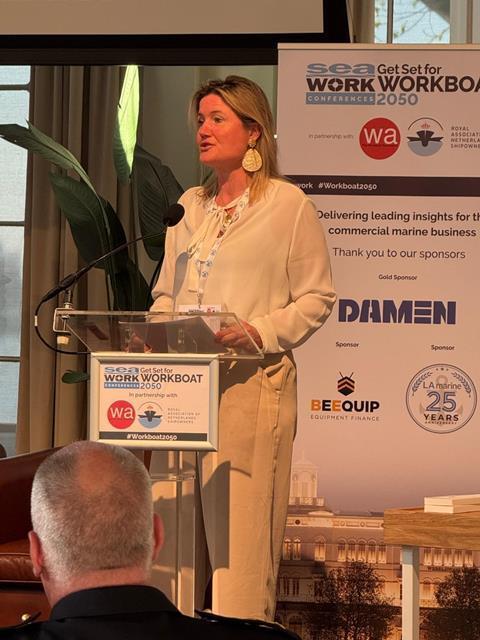
“Decarbonising the workboat sector in the North Sea is in the context of a growing security threat, because it’s home to critical infrastructure that powers much of Europe and helping to lead the way in the energy transition,” she said.
“Tension has risen dramatically. We have seen cyber and military attacks and it’s volatile and unpredictable. We need to invest in the necessary technology, for example electric and hybrid propulsion can reduce emissions and offer greater operational efficiency.
“Decarbonisation is an opportunity to put the world in sustainable maritime technologies, with tremendous ingenuity.”
Chickens and eggs
Which comes first – the fuel choice or the fuel availability? Hydrogen appears to be successfully powering Rotterdam’s water taxis, which are becoming something of a symbol of the city, but it is far from readily available everywhere.
“Do you put a hydrogen system in your vessel or do you wait for the port to put the hydrogen infrastructure in place first?” asked Workboat Association CEO Kerrie Forster.
“We have four different types of vessels, and at the moment we are envisaging that we will need four different types of fuel,” said Herbert Broers, Managing Director of Dutch pilotage firm Loodswezen BV.
And there are also the other fuel options – methanol is a frontrunner, for example, and batteries.
In his Gold Sponsor address, Damen Sales Manager Damen Michel Radjiman talked about the company’s electric tugs – the first one, Sparky, now operating in New Zealand. But going fully electric on a wider scale will not be possible until electricity sourcing is solved, he said.
“We provide the full solution – the battery packs, the charging arm – but the trouble is the grid,” he said. “We had a project in Amsterdam that couldn’t supply the energy required for a 24m, 320gt tug, so it ground to a halt.
“We know that it’s more expensive, and we know that the Port of Antwerp is now commissioning one of those tugs because the company wants to take the step. Someone has to pick up the bill and pay it. It’s a matter of operators wanting to go green. If a large operator like Maersk wants to invest they will do it on one or two vessels as a test case then in the end they will start to have more.”
Batteries will decline over the years and that has to be taken into account, said Radjiman, but battery technology is developing so that could change.
Batteries were over estimated, hydrogen under estimated, said Lennart van der Ploeg, Account Manager with Zepp Solutions, which makes hydrogen fuel cell systems.
“The technology is not the challenge, it’s the infrastructure. It’s a proven solution today,” he said.
The client has to want to make the step themselves, said Windcat Workboats Managing Director Willem van der Wel, who presented three dual-fuel hydrogen vessels – the Hydrocats 48, 55 and 60 – that had been requested by a client.
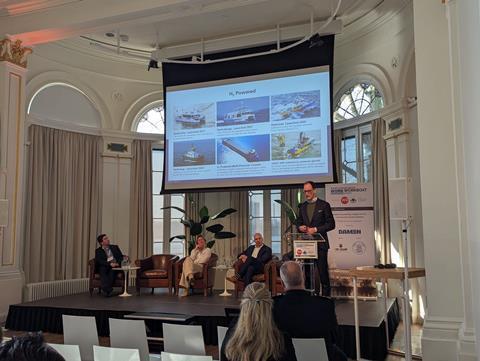
He admitted there were challenges and they can also run on pure diesel ‘because we don’t want to be stopped in our tracks if the fuel isn’t available’, he said.
“The challenge is new fuels are not as energy dense so we need volume and weight,” he said. “If we can bunker every day it’s not a problem but hydrogen availability is still limited. It’s a chicken-and-egg situation.
“I see an opportunity for hydrogen as a fuel in the future, but we need to create hydrogen hubs.”
Challenges and focus
Gijsbert van Marrewijk, Co-founder & Director of Flying Fish, which makes foiling workboats, said that as long as fossil fuels were coming out of the ground at a low price it would be difficult to transition to zero emissions – so there was a need for more carbon tax.
“So the challenge is that there’s not enough stick to beat us with?” asked Forster.
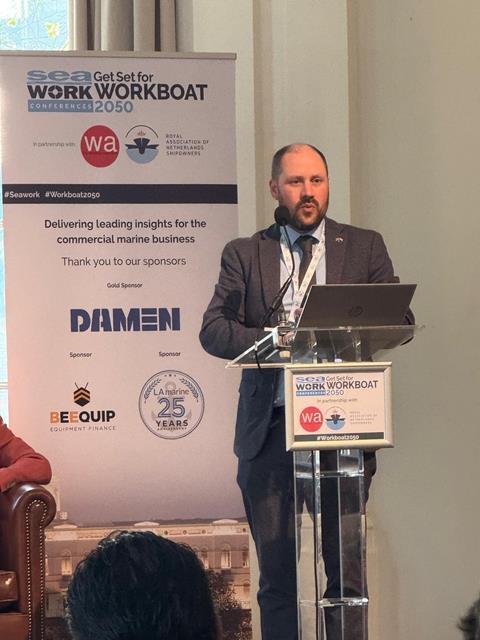
Workboat Association CEO Kerrie Forster
“We spend a lot of time looking at particular models, we take a long-term view and one thing we focus on is ports and harbours and making them or saving them money, and then getting them addicted to renewables,” said Miles Cole, Head of Origination with Net Zero Marine, the shorepower systems company.
“In an ideal world you’d have decarbonisation coming first but the reality is without state-backed funding, you have got to show them the money. The big problem is oil and gas is such a sophisticated machine you have to be very mean and greedy for ports and harbours to come on side.”
Moderating the final panel of the day, Chartwell Marine Managing Director Andy Page asked if any of the panellists’ focus on net zero had changed since five years ago.
Of the three panellists, two said if anything, they were ready to move faster.
“We think we can go faster and in three to five years’ time I can guarantee our technology will be better than now,” said EST-Floattech Technical Sales Manager Ernst van Werkhoven.
“Our focus is not unchanged, but we can also be ready earlier,” said Herman Broers, Managing Director of Loodswezen BV. “We know that politics can change at any time, so if someone says we should be ready by 2040, we should be.”




